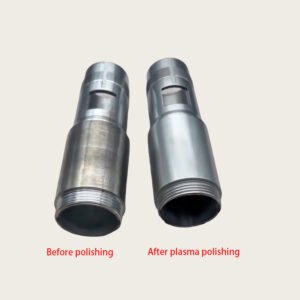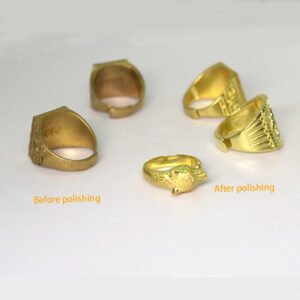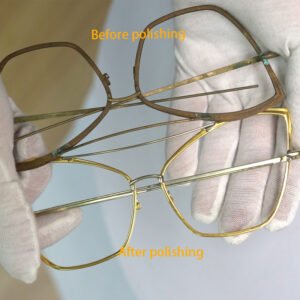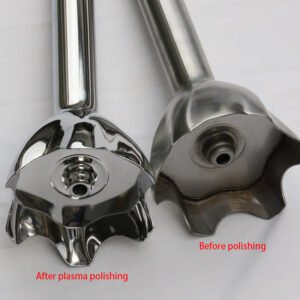A macchina per la lucidatura al plasma is an advanced device that utilizes plasma technology to perform precision polishing and surface modification on various materials. Unlike traditional mechanical or electrolytic polishing, plasma polishing is a non-contact, dry or semi-dry surface treatment method. It works by exciting gas into plasma under specific conditions, where the high-energy ions, electrons, free radicals, and neutral particles interact with the surface of the workpiece, achieving micro-level surface refinement and performance enhancement.
Working Principle
The core of plasma polishing lies in the generation and application of plasma—often referred to as the fourth state of matter, consisting of partially ionized gas with a mix of charged and neutral particles. Plasma polishing machines typically generate plasma through several key methods:
1. Electrolytic Plasma Polishing (EPP)
EPP is a common plasma polishing technique. In a specific electrolyte, high voltage is applied to form a gas film around the workpiece surface. Micro-discharges occur in this film, creating plasma that microscopically corrodes and dissolves the surface—particularly in protruding areas where the current density is higher, allowing for faster material removal. This results in a smoother and shinier surface. Additionally, reactive particles in the plasma chemically interact with the surface to form a dense passivation layer, enhancing corrosion resistance.
2. Ion Beam Polishing (IBP)
IBP is performed in a vacuum environment using an ion source to generate a high-energy ion beam that bombards the surface of the workpiece. The kinetic energy of the ions physically sputters away atoms from the surface, achieving ultra-smooth, nanoscale-level polishing. This method is highly precise and is widely used for optical components, semiconductor materials, and other ultra-precision applications.
3. Other Plasma Technologies
These include RF (radio-frequency) or microwave plasma treatments, often used for surface cleaning, activation, etching, or thin-film deposition. In some cases, they can also achieve surface smoothing effects.
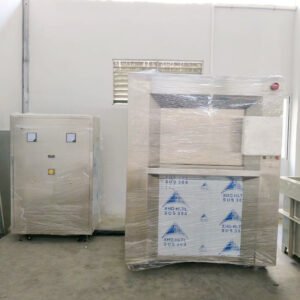
Application Fields of Plasma Polishing Equipment
Thanks to its unique advantages, plasma polishing technology is widely used across various high-tech and precision manufacturing sectors:
Medical Devices: Used for polishing implants and surgical tools to improve surface finish, reduce bacterial adhesion, and enhance biocompatibility.
Aerospace: Applied to engine blades and structural parts to improve fatigue strength and corrosion resistance.
Precision Optics: Used for polishing lenses and mirrors to achieve extremely low surface roughness and improve optical performance.
Mold Manufacturing: Enhances the surface quality of mold cavities, improving demolding performance and product appearance.
3C Electronics: Applied to the polishing of housings and internal components of smartphones, tablets, and other electronics for enhanced appearance and function.
Automotive Parts: Polishes engine and transmission components to improve wear resistance and extend service life.
Jewelry: Provides fine polishing for complex-shaped jewelry pieces, giving them more uniform and lasting shine.

Plasma polishing effect
Advantages of Plasma Polishing Machines
Compared to traditional polishing methods, plasma polishing offers several significant benefits:
Non-Contact: Eliminates mechanical stress, making it ideal for thin-walled, complex, or fragile components.
High Precision: Achieves nano- or even sub-nanometer surface roughness, suitable for ultra-precision processing.
Eco-Friendly: Typically uses fewer chemical reagents, reducing wastewater and environmental impact.
Improved Material Properties: Enhances not only surface gloss but also corrosion resistance, hardness, and wear resistance.
Wide Applicability: Suitable for metals, ceramics, semiconductors, and more.
In summary, the plasma polishing machine represents a significant advancement in surface finishing technologies. With its non-contact nature, ultra-high precision, and eco-friendly characteristics, it offers a superior and efficient solution for modern industrial surface treatment demands.

